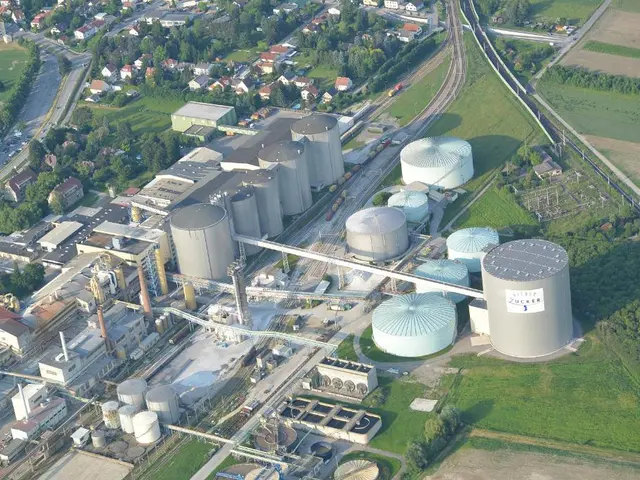Title: China's Worrying Deflation Issue: Can't Stop Sinking Consumer Prices
China's National Bureau of Statistics revealed some disheartening data on Saturday, showing a 0.5% decrease in the Consumer Price Index (CPI) annually, marking the steepest drop since November 2020. Analysts, polled by Reuters, had expected a milder 0.1% decline. This drop further intensified the pressing need for Beijing to take swift action to ignite demand and prevent a downward pricing spiral.
The latest CPI figures surfaced just days after top policy-makers vowed to intensify fiscal and monetary support to buoy the slowing economy. Impacts of China's year-long struggle with subdued prices have been evident in the stagnating real estate market and dwindling consumer confidence.
Inflation started slowing down in February and plunged into the negative territory in July for the first time in more than two years, recovered in August, and stagnated in September. Unfortunately, it returned to the negative in October.
"China's deflation situation is worsening under the triple pressure of domestic food prices, international oil adjustments, and weak domestic demand," warned Citi analysts in a Sunday report, highlighting mounting concerns about shrinking consumer prices spilling over to services industries.
The prominent contributor to the CPI drop is the food prices, which decreased by 4.2% annually in November, with pork prices falling by 31.8%. Additionally, the global oil prices falling in November to their lowest levels in months further contributed to the price cut.
Furthermore, the inflation rate in services also decelerated, with a yearly growth of 1% and 1.2% in October, respectively. Meanwhile, the Producer Price Index (PPI), largely determined by raw material and commodity prices, fell by 3% in November, making it the 14th consecutive month of a decline.
A Closer Look at Businesses
The intensifying deflationary pressures have raised fresh doubts about China's economic recovery.,"It's crucial for policy-makers not to delay in taking measures to avoid a vicious cycle between deflation, trust, and economic activity," stressed the Citi analysts.
Last month, the governor of the People's Bank of China, Pan Gongsheng, confirmed that the bank would maintain its accommodative monetary policy to support the economy and expected consumer prices to rise in coming months.
High-ranking officials also convened a Politburo meeting on Friday and vowed to take further steps to boost domestic demand and consumer spending.
These Politburo meetings and the annual Central Economic Work Conference (CEWC) later in the month usually set the tone for the following year's economic policies. Investors eagerly await further details of the CEWC's economic policies for the upcoming year, with analysts predicting prompt cuts in reserve requirement ratios and benchmark interest rates.
Enriching the Base Article
Chasing the deflationary trend, Chinese authorities are pursuing a multifaceted strategy to stem prices and spur economic growth. While the effectiveness of these strategies remains uncertain, here are the key initiatives:
- Monetary Policy Easing: The People’s Bank of China (PBOC) aims to cut benchmark interest rates by 40 basis points – the largest reduction since 2016 – and buy treasury bonds to support increased government borrowing.
- Fiscal Stimulus: The government seeks to raise the fiscal deficit ratio to 4% of GDP in 2025 from the current 3%, releasing additional liquidity into the economy and encouraging spending.
- Driving Consumer Demand: An action plan focuses on eliminating consumer scams, price gouging, and substandard goods to encourage healthier consumption.
- Enhancing the Business Environment: Foreign investment is on the agenda, with the authorities planning to expand market access, ease financial restrictions, and establish a fair business environment for foreign enterprises.
- Support for Manufacturing, High-Tech Industries, and Workers: Efforts to address income disparities, improve living standards, and protect worker interests are critical to triggering consumer spending and fostering confidence in China's economy.
However, attaining this ambitious vision is fraught with challenges. China's economic complexities and international uncertainties may threaten the success of these reforms.








